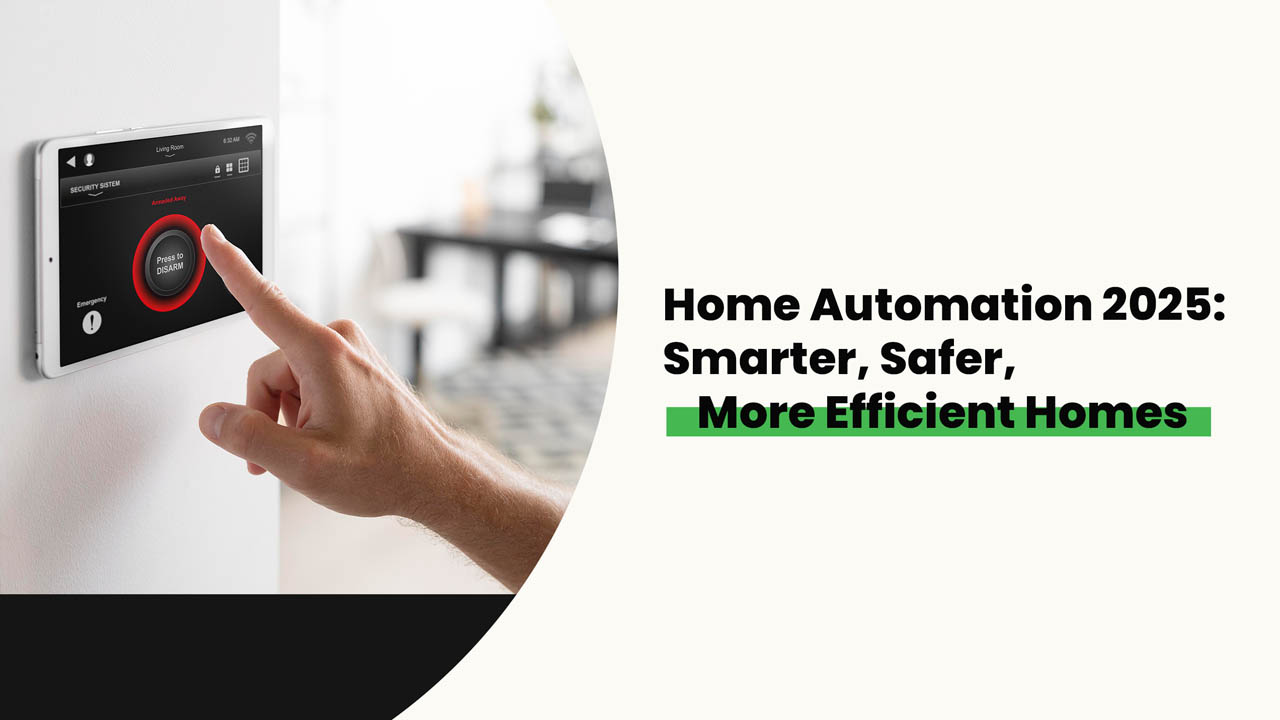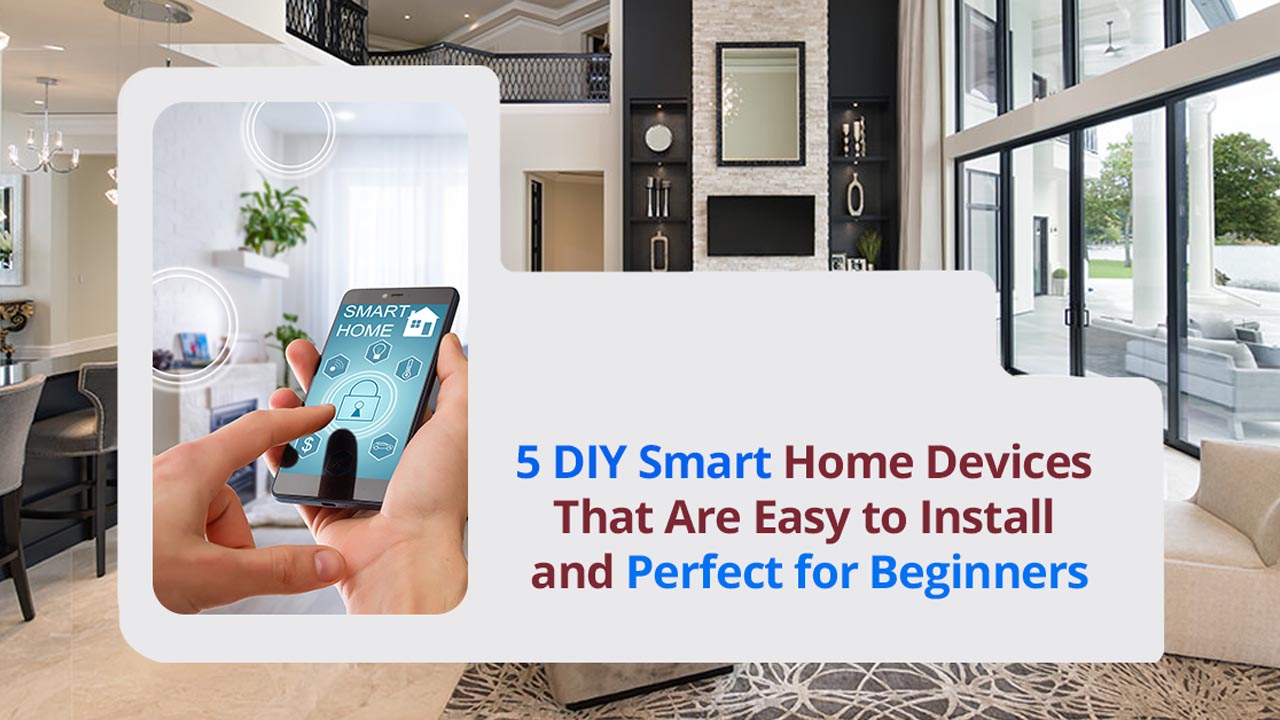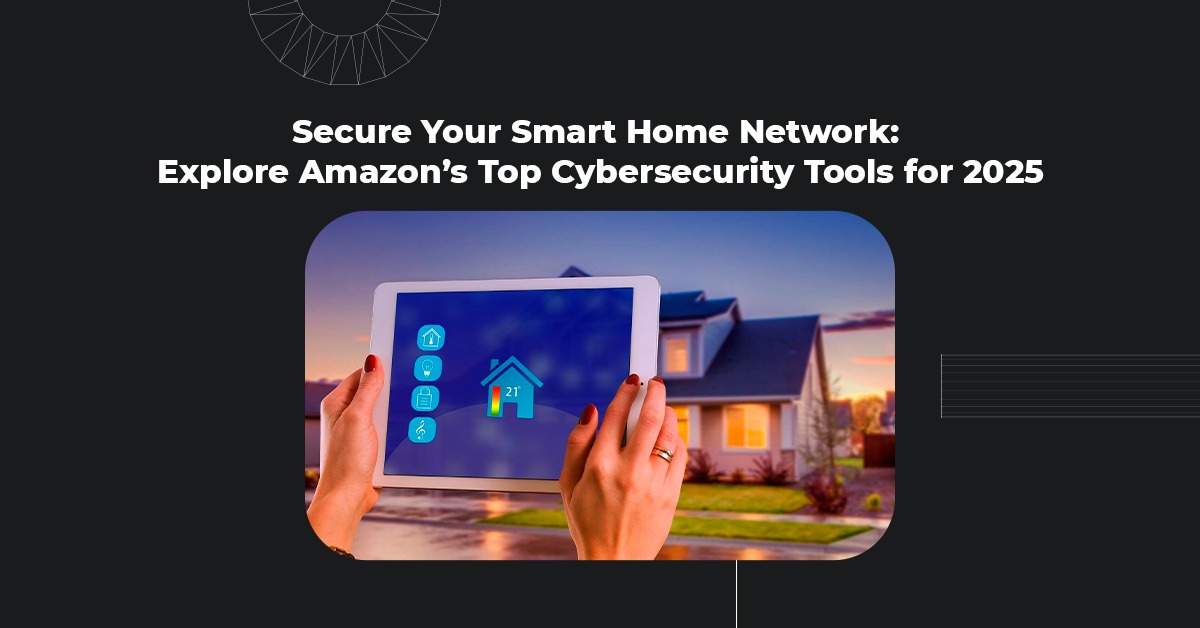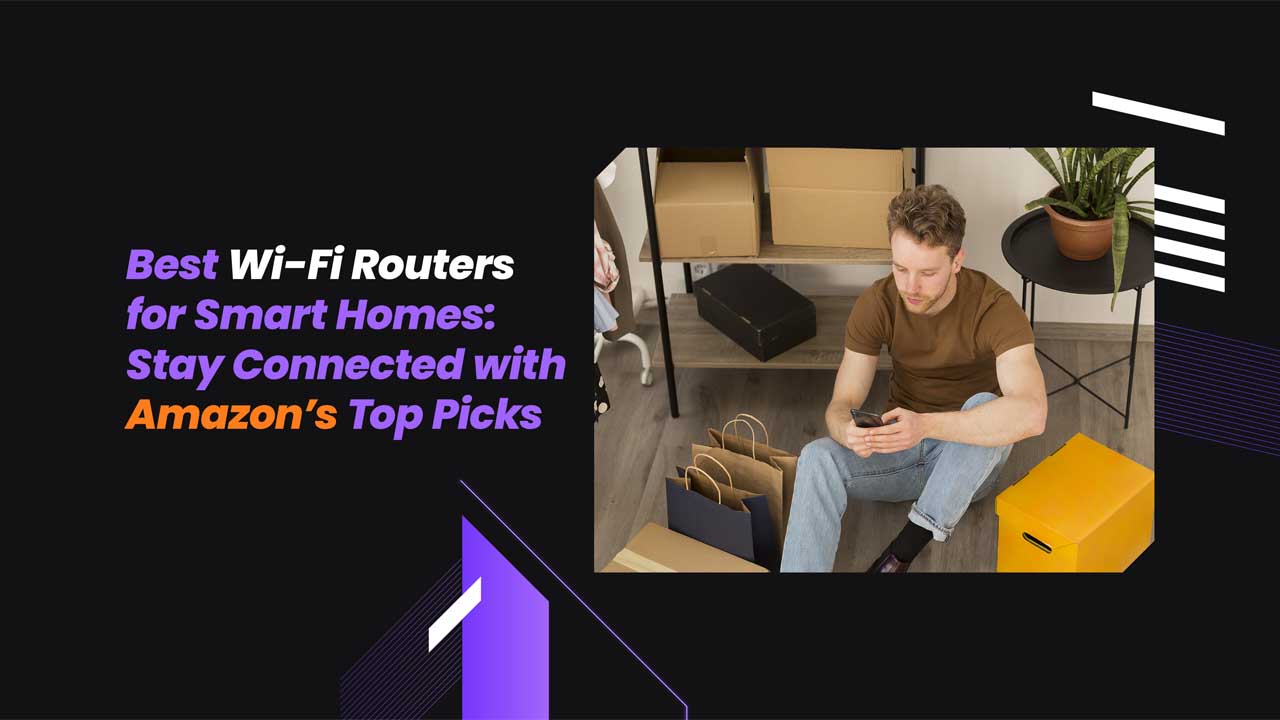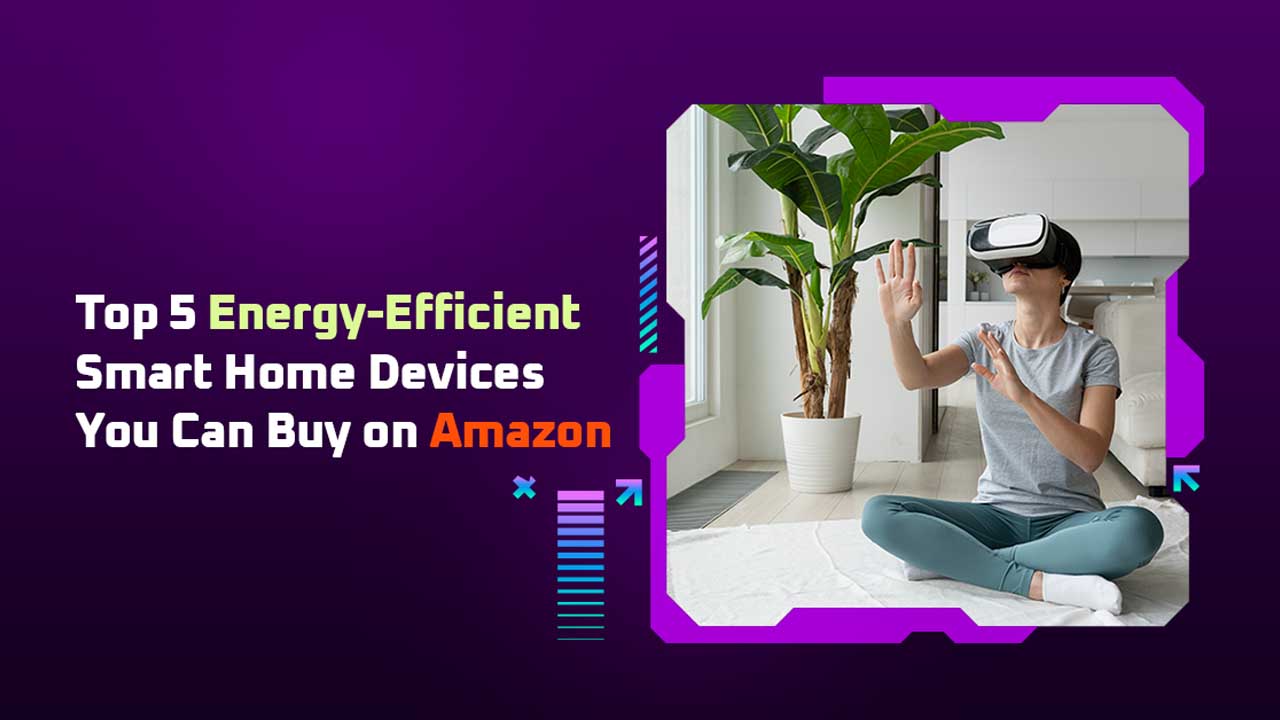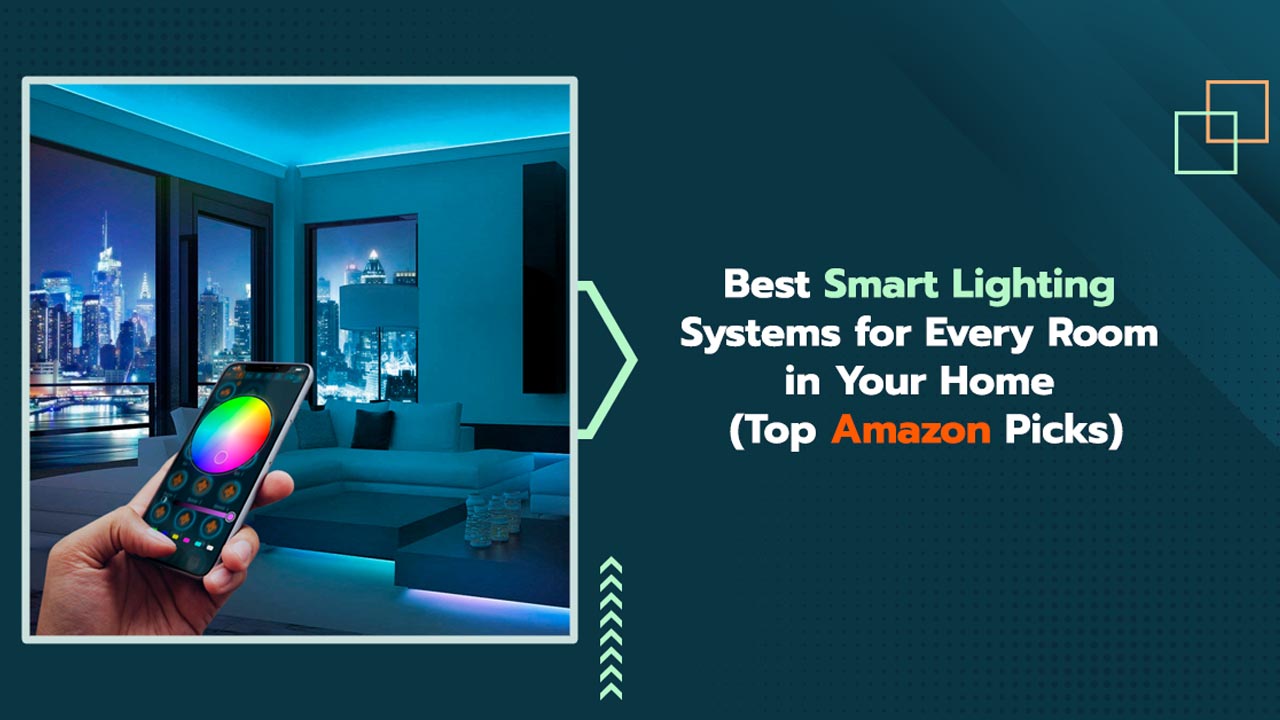Technology is evolving quickly, and our homes are following suit. Home automation is no longer a luxury — in 2025, it’s becoming a necessity for anyone seeking a smarter, safer, and more efficient lifestyle. By integrating smart devices that control lighting, heating, security, and appliances, home automation makes everyday tasks simpler and more convenient.
In recent years, key trends are pushing smart homes into the mainstream. Artificial intelligence (AI) is making devices more intuitive, 5G internet is enabling faster connections, and rising energy costs are making energy-efficient homes more appealing than ever. As a result, the global smart home market is expected to reach over $200 billion by 2025.
This guide will help you understand why home automation is so important, explore the key components of a smart home, and provide expert tips on how to create a home that’s both smart and future-ready.
Why Home Automation Matters More Than Ever in 2025
Home automation isn’t just about gadgets. It’s about living smarter, saving money, and feeling safer. Let’s look at why it’s becoming a necessity, not a luxury.
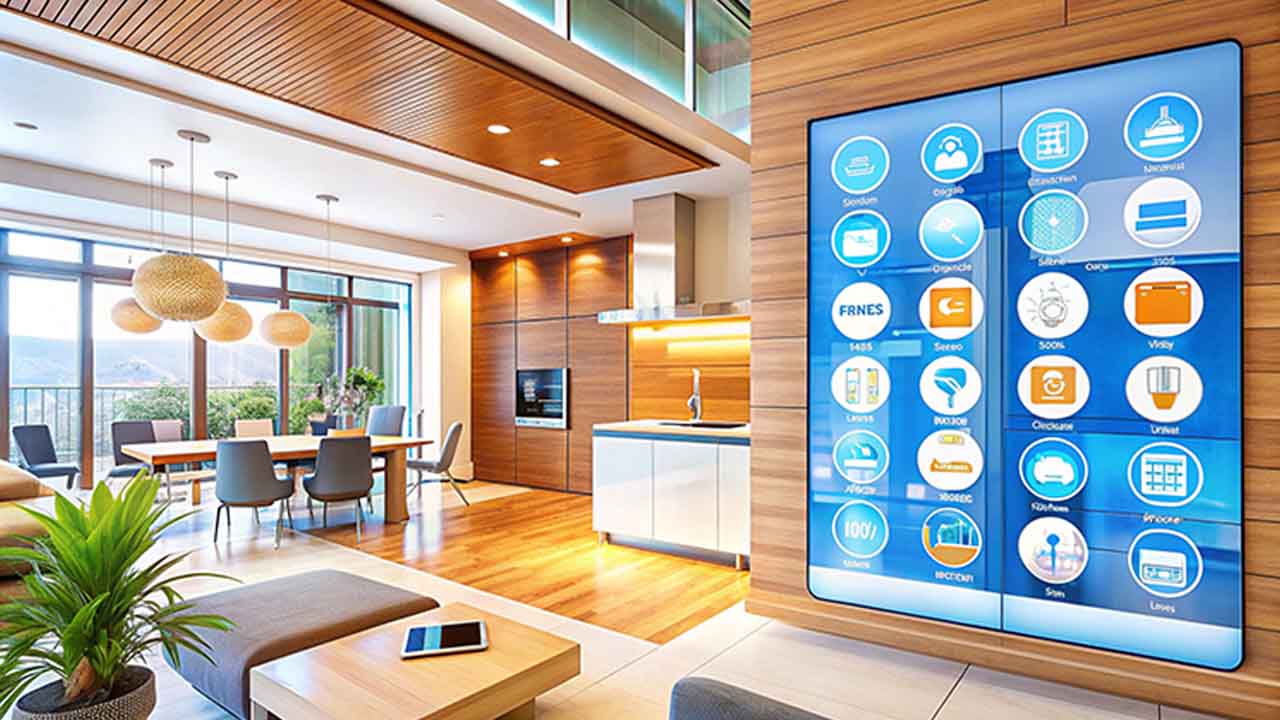
Increased Energy Costs → Smart Savings
Energy prices are rising globally. A smart home helps you cut costs by controlling how and when you use power.
- Smart thermostats lower heating when you’re away.
- Smart lighting turns off automatically in empty rooms.
- Energy-monitoring devices spot waste and suggest savings.
In fact, Energy Star reports that smart thermostats can save households up to 10% annually on heating and cooling bills.
Rising Security Concerns → Smarter Protection
Modern threats require modern solutions. Smart security systems give you real-time updates, remote control, and AI-powered monitoring.
- Smart locks let you lock doors from your phone.
- Video doorbells show you who’s at your door — even when you’re not home.
- Motion detectors and cameras send instant alerts.
According to a report by SafeWise, homes without security systems are 300% more likely to be broken into than those with one.
Busy Lifestyles → Demand for Automated Convenience
Life today is hectic. Smart homes help you save time and stress.
- Set routines so your lights, heating, and security activate automatically.
- Use voice commands to control your devices hands-free.
- Get notified if anything unusual happens at home.
With more people working remotely and balancing home life, automation is no longer optional, it’s essential.
Key Components of a Fully Automated Smart Home
Building a smart home doesn’t mean buying every gadget out there. It’s about choosing the right systems that work together to make life easier. Here’s a breakdown of the essential components for 2025.
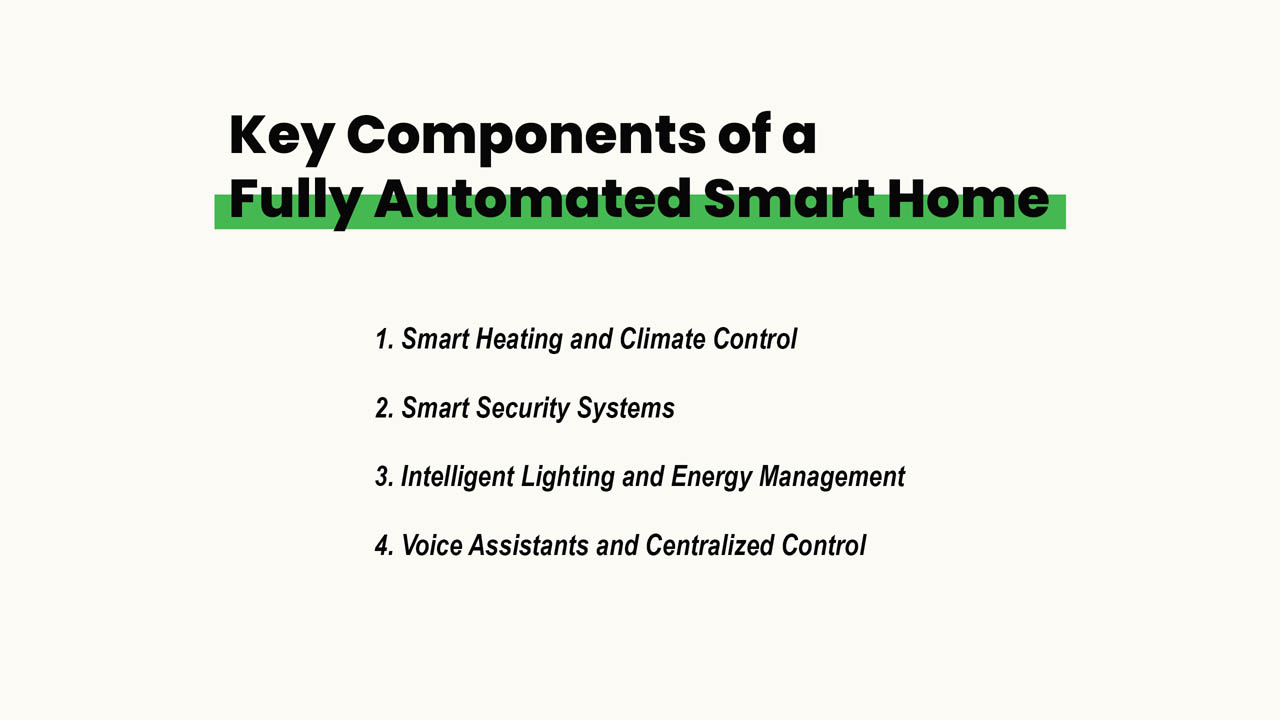
1. Smart Heating and Climate Control
One of the first steps in home automation is upgrading your climate control.
Smart thermostats like Nest, Tado°, and Hive learn your habits and adjust the temperature automatically.
- Heading home early? Adjust the heating remotely via an app.
- Going away? Set the system to eco-mode to save energy.
Many smart thermostats now use AI to predict your heating needs based on past behavior and even the weather forecast.
2. Smart Security Systems
Security is a top priority for any homeowner.
Smart security devices, including locks, video doorbells, and cameras, offer 24/7 monitoring and instant alerts.
- Check live camera feeds anytime, anywhere.
- Get a notification if someone rings your smart doorbell.
- Lock and unlock doors remotely for family or deliveries.
Top brands like Ring, Arlo, and August offer systems that are easy to install and manage from your phone.
3. Intelligent Lighting and Energy Management
Lighting can do more than brighten a room, it can help you save energy and create the perfect mood.
Smart lights can:
- Turn off when no one’s around.
- Dim or brighten depending on time of day.
- Be controlled by schedules or motion sensors.
Smart bulbs like Philips Hue and LIFX also work with voice assistants and allow you to create scenes like “Movie Night” or “Morning Wake-Up.”
4. Voice Assistants and Centralized Control
Managing multiple devices is easy when you have a central hub.
Popular voice assistants include:
- Amazon Alexa
- Google Home
- Apple HomeKit
These platforms let you control everything with simple voice commands or via a single app. Imagine saying, “Goodnight,” and your assistant turns off the lights, locks the doors, and sets the thermostat, all at once.
How to Plan Your Home Automation Upgrade in 2025
Planning your home automation upgrade requires a thoughtful approach. It’s not just about jumping on the latest tech trends but making smart decisions that align with your specific needs. Here’s a step-by-step guide to help you get started.
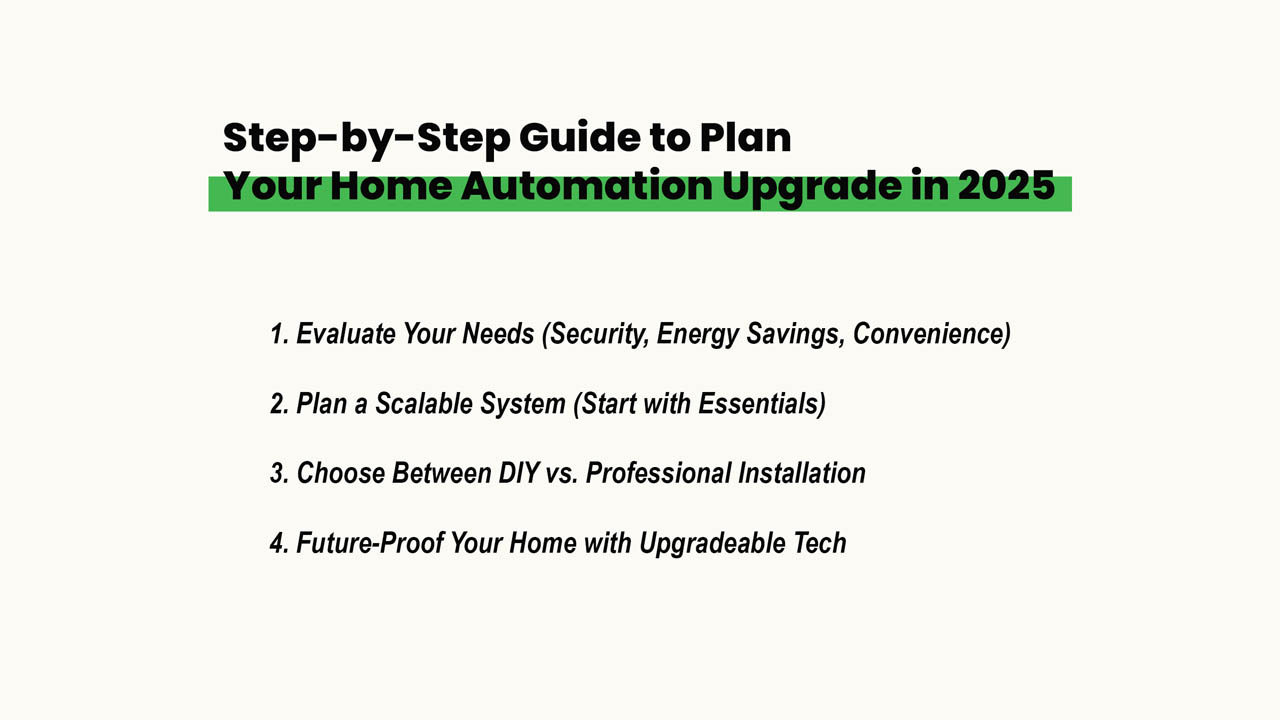
Step 1: Evaluate Your Needs (Security, Energy Savings, Convenience)
The first step in upgrading your home automation is evaluating your current needs. Ask yourself:
- Security: Do you want to improve home security? Are you interested in smart cameras, doorbell cameras, or smart locks?
- Energy Savings: Are you looking to lower your energy bills? Consider smart thermostats and lighting that adjust based on your usage patterns.
- Convenience: Are you looking to automate routine tasks? Think about smart assistants or automated lighting schedules.
By identifying your priorities, you can tailor your smart home upgrade to fit your lifestyle.
Step 2: Plan a Scalable System (Start with Essentials)
Start small and think big. While it might be tempting to automate everything at once, it’s better to build your smart home gradually. Begin with core systems like smart thermostats, security systems, and lighting automation. These are the building blocks of a connected home and will give you the most value.
Once you have the basics in place, you can scale your system by adding more advanced features like smart appliances, voice assistants, or home energy management systems.
Step 3: Choose Between DIY vs. Professional Installation
Decide whether you want to install your devices yourself or hire a professional.
- DIY Installation: Many smart home devices are designed for easy installation and can be set up without a professional’s help. These include smart lights, thermostats, and security cameras.
- Professional Installation: If you’re looking to integrate more complex systems like a home theater system, smart home hubs, or security cameras that require hardwiring, professional installation is recommended.
Make sure to consider your technical ability, time constraints, and budget before deciding.
Step 4: Future-Proof Your Home with Upgradeable Tech
Home automation technology is constantly evolving. When choosing devices, look for products that can be easily upgraded or expanded. Opt for modular systems that allow you to add new devices as they become available. This way, you won’t need to replace your entire system when new technology emerges, and your home will be ready for future innovations.
Top Home Automation Trends to Watch in 2025
Home automation is a fast-moving field, and 2025 promises even more exciting advancements. Stay ahead of the curve by knowing what trends are shaping the future of smart homes.
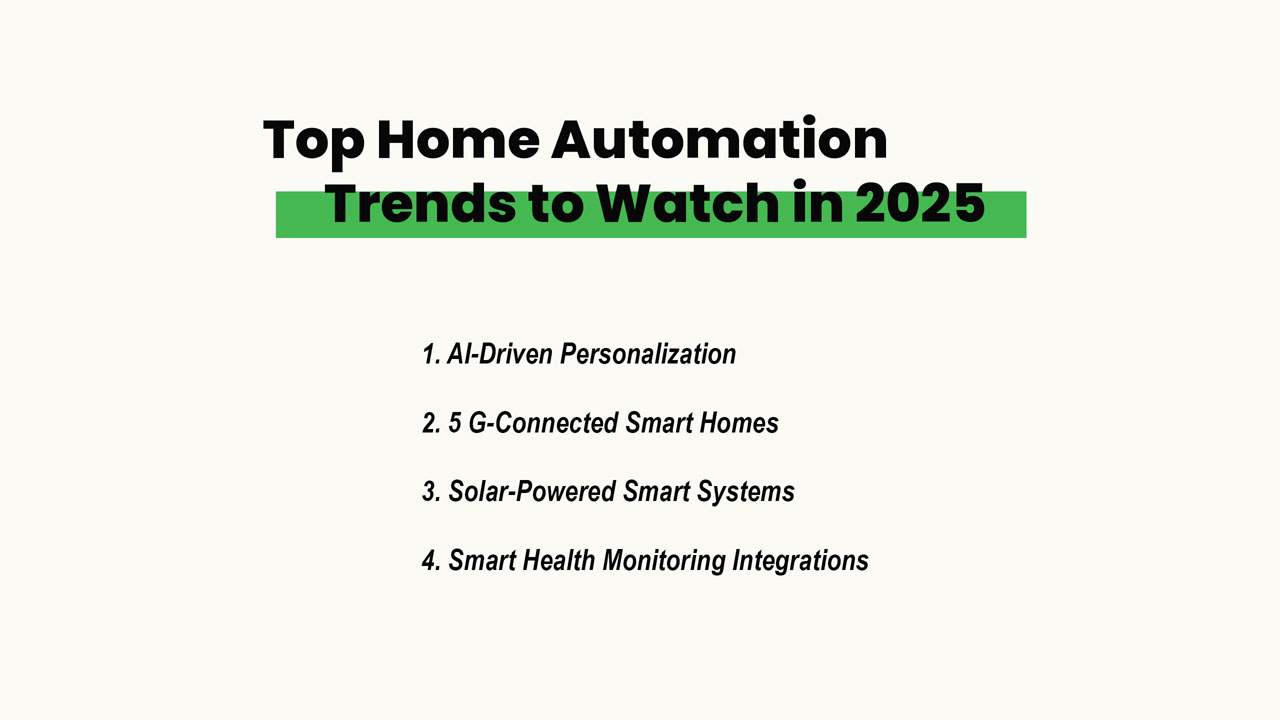
1. AI-Driven Personalization
Artificial Intelligence is becoming more embedded in smart devices, allowing them to learn from your behavior. AI-driven systems can anticipate your needs, adjust settings automatically, and even suggest changes based on your habits. This level of personalization makes home automation even more efficient.
2. 5 G-Connected Smart Homes
The rollout of 5G technology will revolutionize smart homes. With faster internet speeds and lower latency, 5G will enable your smart devices to communicate almost instantly.
Expect more seamless integration between devices and real-time updates, making your home automation system more responsive and reliable.
3. Solar-Powered Smart Systems
As sustainability becomes a bigger priority, solar-powered smart systems are gaining traction. These systems use solar energy to power smart devices, helping you reduce your carbon footprint while also cutting down on energy costs. It’s an eco-friendly trend that aligns well with the growing push for sustainable living.
4. Smart Health Monitoring Integrations
The future of home automation is extending into health management. Expect to see more integrations between smart home systems and health monitoring tools.
Devices that track your heart rate, sleep patterns, and even air quality will be able to connect with your smart home network, providing real-time health data and automatic adjustments to your environment for better wellness.
Common Mistakes to Avoid When Building a Smart Home
Building a smart home can be exciting, but it’s easy to make mistakes that can complicate the process or lead to frustration down the line. Here are some common pitfalls to avoid:
Overcomplicating Systems
Start with the essentials. Overcomplicating your smart home by adding too many devices at once can make it harder to manage. Focus on creating a simple, functional system that you can expand over time.
Ignoring Network Security
Smart home devices are connected to the internet, making them vulnerable to hacking if not properly secured. Always ensure your devices are protected by strong passwords, encrypted networks, and up-to-date security features.
Skipping Product Compatibility Checks
Before purchasing, check whether your devices are compatible with each other. Some devices may only work within a specific ecosystem (e.g., Apple HomeKit, Amazon Alexa). Ensure all your devices will be able to communicate seamlessly with one another.
Choosing Cheap Devices Over Quality
While budget options might seem attractive, investing in quality devices will ensure better performance and reliability in the long run. Look for reputable brands with strong customer reviews and a proven track record in the smart home industry.
Final Thoughts: Why the Right Home Automation Strategy Matters
Home automation offers several benefits: enhanced security, energy savings, and a smarter lifestyle. However, to reap these benefits, it’s important to approach your upgrade strategically.
By planning ahead and avoiding common mistakes, you can create a home that’s both functional and future-proof. Remember, start small today and scale your smart home over time to suit your needs and budget.
Need expert help designing your smart home? Contact us for a free consultation and get personalized advice on how to turn your home into a smarter, safer, and more efficient space.
17 min read

